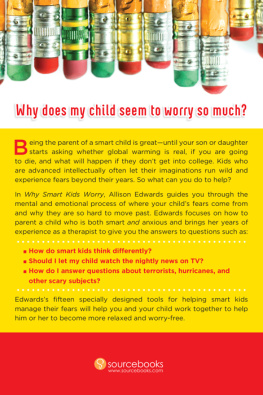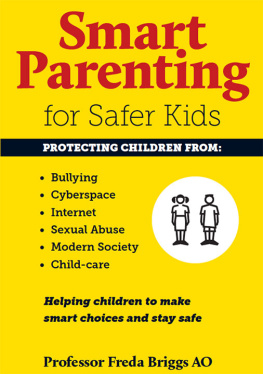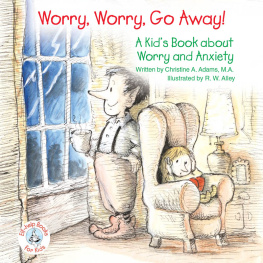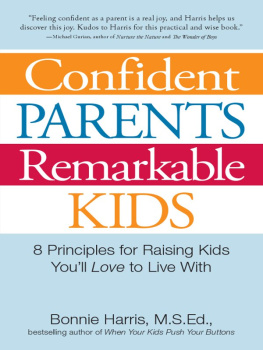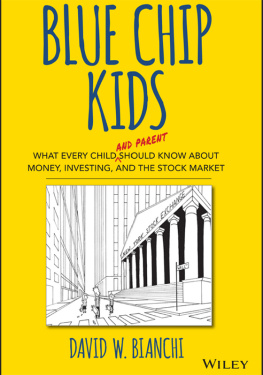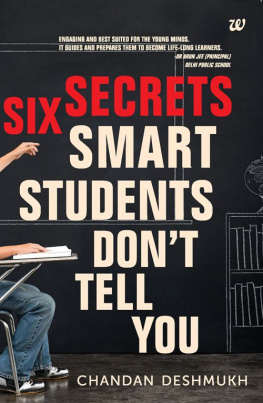Copyright 2013 by Allison Edwards
Cover and internal design 2013 by Sourcebooks, Inc.
Cover design by Foltz Design
Cover images Image Source/Getty Images
Sourcebooks and the colophon are registered trademarks of Sourcebooks, Inc.
All rights reserved. No part of this book may be reproduced in any form or by any electronic or mechanical means including information storage and retrieval systemsexcept in the case of brief quotations embodied in critical articles or reviewswithout permission in writing from its publisher, Sourcebooks, Inc.
Photo one, page 7, courtesy of www.photos-public-domain.com.
Photo two, page 7, courtesy of www.aaps.k12.mi.us.
Photo three, page 99, courtesy of Allison Edwards.
This publication is designed to provide accurate and authoritative information in regard to the subject matter covered. It is sold with the understanding that the publisher is not engaged in rendering legal, accounting, or other professional service. If legal advice or other expert assistance is required, the services of a competent professional person should be sought. From a Declaration of Principles Jointly Adopted by a Committee of the American Bar Association and a Committee of Publishers and Associations
This book is not intended as a substitute for medical advice from a qualified physician. The intent of this book is to provide accurate general information in regard to the subject matter covered. If medical advice or other expert help is needed, the services of an appropriate medical professional should be sought.
Published by Sourcebooks, Inc.
P.O. Box 4410, Naperville, Illinois 60567-4410
(630) 961-3900
Fax: (630) 961-2168
www.sourcebooks.com
Edwards, Allison.
Why smart kids worry : and what parents can do to help / Allison Edwards.
pages cm
Includes index.
(pbk. : alk. paper) 1. Anxiety in children. 2. Adjustment (Psychology) in children. 3. Parenting. I. Title.
BF723.A5.E393 2013
155.41246dc23
2013017033
Contents
Introduction
Five-year-old Thomas is worried about death. He is afraid his parents are going to die, along with his grandparents, his dog, and his best friend. Mommy, Im scared, Thomas says each night before bedtime. What if you and Daddy die while Im sleeping? Although Thomas is in kindergarten, hes reading on a fourth-grade level. He is well liked, has lots of friends, and comes from a stable home. I dont know why this is happening, his mother says. He doesnt know anyone who has died. I dont allow him to watch scary movies. Hes only five. How can he already be worrying about death?
After receiving a B on her last math test, eight-year-old Cassandra worries she wont get into college. I used to get all As and now that Im getting Bs, Ill never get into college. Cassandras mother is dumbfounded by her daughters remarks. We dont talk about college at home. I dont expect As. I dont understand why shes worried about something ten years from now.
Eleven-year-old Madeline worries her parents are getting a divorce. I heard my parents fighting last night and Im scared theyre getting a divorce. Sarahs parents got divorced last year and now she only gets to see her dad on the weekends. Madelines mother and father have no intention of getting a divorce and are frustrated by Madelines reaction to their small argument. Madelines always taking things to the next level, her mother says. I cant get her to understand that sometimes parents fight. It doesnt mean we are getting a divorce. I dont know what to do.
Anxiety is the number-one mental-health issue among children in the United States, and it has held that spot for over a decade. It also happens to be the number-one mental-health issue among adults in the United States, so its apparent the apple doesnt fall far from the tree.
Were an extremely anxious nation.
What happens between childhood and adulthood? Are the anxious adults of today the product of the anxious kids of the 50s, 60s, and 70s? Will the anxious kids of today become the anxious adults of the future? Research tells us the human brain is most malleable in childhood, and as we grow older, our brains become less likely to change. What is relatively simple to change for a five-year-old is difficult to change for a fifty-five-year-old.
As a psychotherapist, I see this time and time again. I might see a severely anxious seven-year-old, and after giving the parents some tools and working with the child for a short period of time, the child improves remarkably. Then I see a severely anxious middle-aged adult, and the situation looks very different. Things move much slower. They are much harder to change. Thats because the negative patterns have existed longer, and theyve seeped into the cracks of everyday life. Quite often, issues that could have been remedied in a persons childhood become large obstacles in his or her adulthood.
The best time to help an anxious person is during childhood. Before patterns become too ingrained and self-esteem is too low, kids (and their parents) need the resources to turn things around.
This is what this book is intended to do: give parents the information and tools they need to help their children with anxiety. Specifically, to give the parents of smart kids what they need to help their children. As you will see in this book, smart kids think differently than regular kids, and you must parent them differently. Well get into the definition of smart later, but for now its important to know that smart kids worry about different things than regular kids, so you must be prepared to handle the fears they bring to the table.
I suspect you have a child who is smart, talented beyond his years, yet troubled by advanced-level fears he or she is unequipped to handle. Your child has likely asked you questions you dont know how to answer, and your child may seem more advanced than you remember being at the same age. He is processing new information so quickly you cant seem to keep up.
While a vast number of smart kids struggle with anxiety, there have been very few books that directly address this issue. There are a variety of books about raising smart children, as well as books about how to parent anxious children, but virtually no information on how to raise a smart and anxious child. This book fills the gap. With the case studies, practical information, and parenting tools included in this book, you will be able to help your bright, precocious child be happier and more equipped to handle his anxiety.
Most books out there focus on how to fix your childs anxiety rather than on how to connect with your child during anxious moments. This book is different. The information and tools included in this book are not intended to make your childs anxiety go away; rather, they are intended to help your child channel his anxiety. In a fix it world, we are often searching for the next thing that will make it all better. When we try to fix kids, we send the message that they arent good enough. When we help them accept the part of them that worries and help them channel their anxiety, we empower them. It takes only a brief look at the retail and diet industries to realize that quick fixes dont last. Quick fixes often put us at a worse place than where we started.
That being said, your childs anxiety can greatly improve if you commit to becoming the kind of parent your child needs during anxious moments. That does not mean rescuing your child or solving problems for him; it simply means understanding the way your child thinks and applying the right tools to help him be more independent. Your child will ultimately need to be able to process fears on his own, and when you provide a safe, nurturing environment while setting appropriate boundaries, you allow him to do just that.

